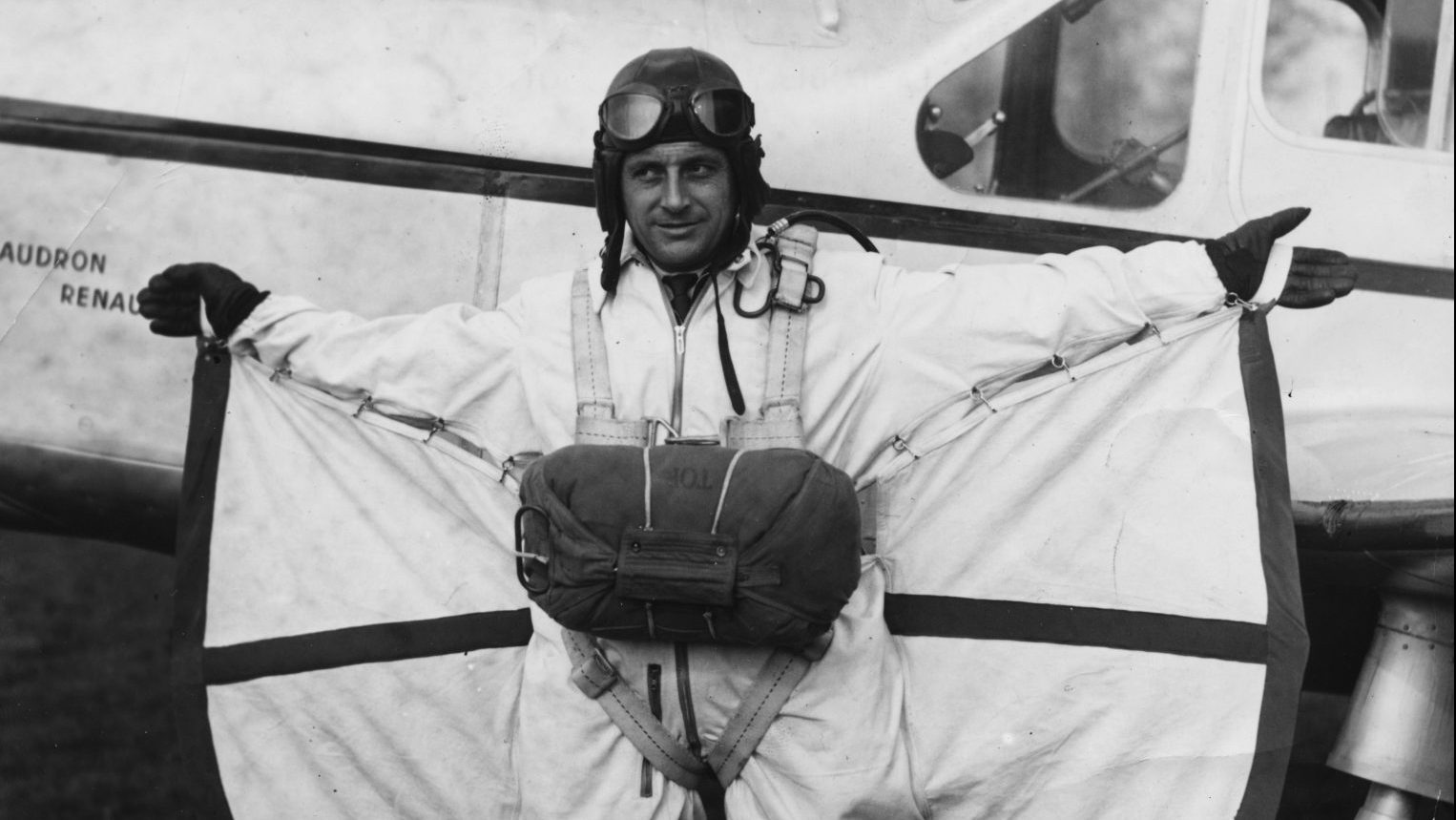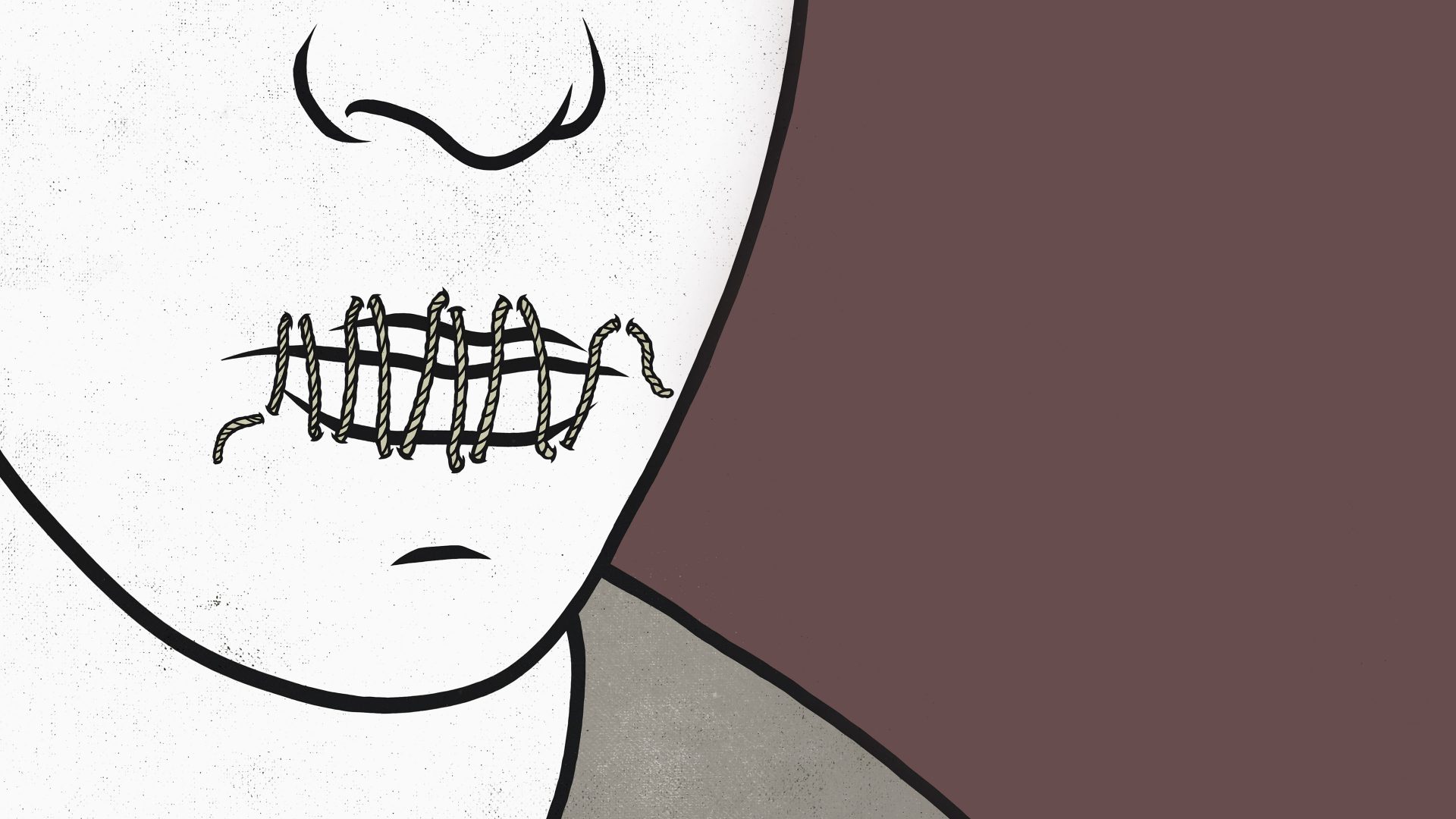Even with the sound of the wind and the engines roaring in his ears, Léo Valentin could appreciate just what a beautiful day it was. Framed by the hatchway through which he’d shortly be leaving the aircraft, the 37-year-old
Frenchman saw a cloudless, deep blue sky over a green and yellow patchwork of fields and, when the aircraft banked, the sprawling grey swarm of the 100,000 people gathered below at Liverpool’s Speke Airport that Whitsun bank holiday. All of them, he knew, were at that moment shielding their eyes from the late afternoon sun, looking up at his Dakota plane as he
prepared to abandon himself to gravity for their thrilled entertainment.
He was perfectly aware that underpinning that thrill was the prospect of him plummeting to his death. Hurling himself out of an aircraft at 9,000 feet gave the audience the impression the odds were stacked heavily in favour of the Grim Reaper but Valentin knew different. He was always prepared and left nothing to chance, checking and re-checking his equipment and insisting on a thorough personal examination of the aircraft, inside and out, before take-off.
He’d seen too many people die over the years, from the parachutists he’d trained for the French air force in North Africa during the war to his friend the American wingsuit daredevil Clem Sohn, killed at 25 in 1937 when his parachute failed to open, to take any kind of chance. Let the crowd gasp, the louder the better, because for Valentin this wasn’t so much a battle against gravity as a dance with it.
Born at Épinal in the north-east of France shortly after the end of the first world war, he’d grown up in a traumatised nation where death on an unimaginable scale was a constant presence in the landscape and the soil.
Little wonder he’d looked to the skies, fascinated first by the birds and then by the aircraft, tantalising glimpses of a joyous freedom he could barely imagine.
He joined the army as a paratrooper and instructor and during the second world war parachuted into Brittany as a saboteur before being badly wounded in a firefight. Display acrobatics were trivial compared to that, but there was a scientific purpose behind his jumps: advancing the technology of unpowered human flight. He hadn’t just admired the birds he saw as a child, he wanted to fly among them. That could only happen through relentless professionalism and attention to detail.
“Those who died did so as the result of a mistake, an error of judgment, or maybe the disregard of a minor safety rule,” Valentin once told an interviewer. “I learned from their mistakes and have developed almost foolproof methods as a result. That is why I’m still alive.”
He’d made one descent already that afternoon, delaying opening his
parachute until the last possible moment. Conditions were perfect, there was barely a breath of wind, meaning he could hear shouts of alarm rising from the crowd until he pulled the cord and heard the welcome snap of the canopy above his head. Applause washed up to him like a breaking wave.
This was Valentin’s first public display outside France and he’d planned something special. His reputation was built on a canvas wingsuit in which he’d glide for vast distances before landing. The Liverpool Whitsun crowd would witness his latest development: a lightweight steel harness to which was attached a pair of balsa wood wings. He’d claimed a flight of three miles in practice in France; something similar in front of a large English holiday crowd would enhance his international reputation.
The pilot signalled that the aircraft was in position. Valentin shuffled towards the open door and a journalist along for the ride called out “Bonne
chance” above the din.
“Merci, monsieur,” Valentin replied, pulled his goggles down over his eyes,
positioned himself in the gaping doorway, leaned forward, saw the sun glittering off the windscreens in the car parks below – and was gone.
On the ground everyone was having a wonderful day. Liverpool’s International Air Display on behalf of the Soldiers’, Sailors’ and Airmen’s Families’ Society had gone exactly as planned in perfect weather. There’d been display teams from the US Air Force, a Yugoslav acrobat swinging from a ladder suspended beneath a Tiger Moth, an emotional Spitfire flypast by a Battle of Britain pilot and now the famous daredevil Léo Valentin, all with commentary over the tannoy by Kenneth Wolstenholme. As the Dakota circled overhead the ice cream vans and refreshment huts were on the point of selling out.
Wolstenholme’s voice crackled through the speaker horns, describing how Valentin’s wooden wings allowed him to glide above them in perfect control, riding the breeze, swooping and turning, until he opened his parachute and descended gracefully to earth.
The commentator was reading out some of the technical specifications of
Valentin’s apparatus when the crowd began to suspect something was amiss
over their heads. As the speck in the sky grew larger it was clear Valentin wasn’t gliding, he was falling.
The daredevil was spinning and tumbling, a jumble of arms, legs and useless wings. Spectators were screaming; parents covered the eyes of children and beseeched them not to look. Valentin tried to release his parachute but it caught in the wing apparatus and formed nothing more than a shimmering funnel above him, like a guttering flame or a comet streaking out of the heavens. He clawed at the emergency parachute strapped to his chest but once released it did nothing more than wrap itself around his falling form until he plummeted to earth, mercifully out of sight of the spectators behind some buildings. There was an eerie silence until the tannoy crackled into life with an urgent appeal for a doctor.
Valentin had landed in a field of wheat. The first rescuers waded through an incongruously bucolic scene of bright yellow stalks under a vivid blue sky until they found him, shrouded in parachute silk among the splintered remains of his wings. A local doctor, John Douglas, arrived accompanied by a policeman, both of them out of breath.
“He was dead when I got to him,” Douglas said later.
The journalist in the aircraft would later describe how as the daredevil stood in the hatchway he seemed to be pulled out by the wind before he was quite ready, his left wing striking the doorway and leaving a trail of splintered wood in the air behind him.
The shocked spectators lingered for a while before making their way, ashen-faced, to cars and buses. Among them was a 13-year-old named Paul McCartney, who’d gone along to the show with his friend George Harrison.
“The birdman flew out of an airplane and his parachute didn’t open,” McCartney recalled years later. “We watched him drop and went, ‘uh-oh,
I don’t think that’s right.’ We thought, ‘any second now his parachute’s got to open’. And it never did.”




